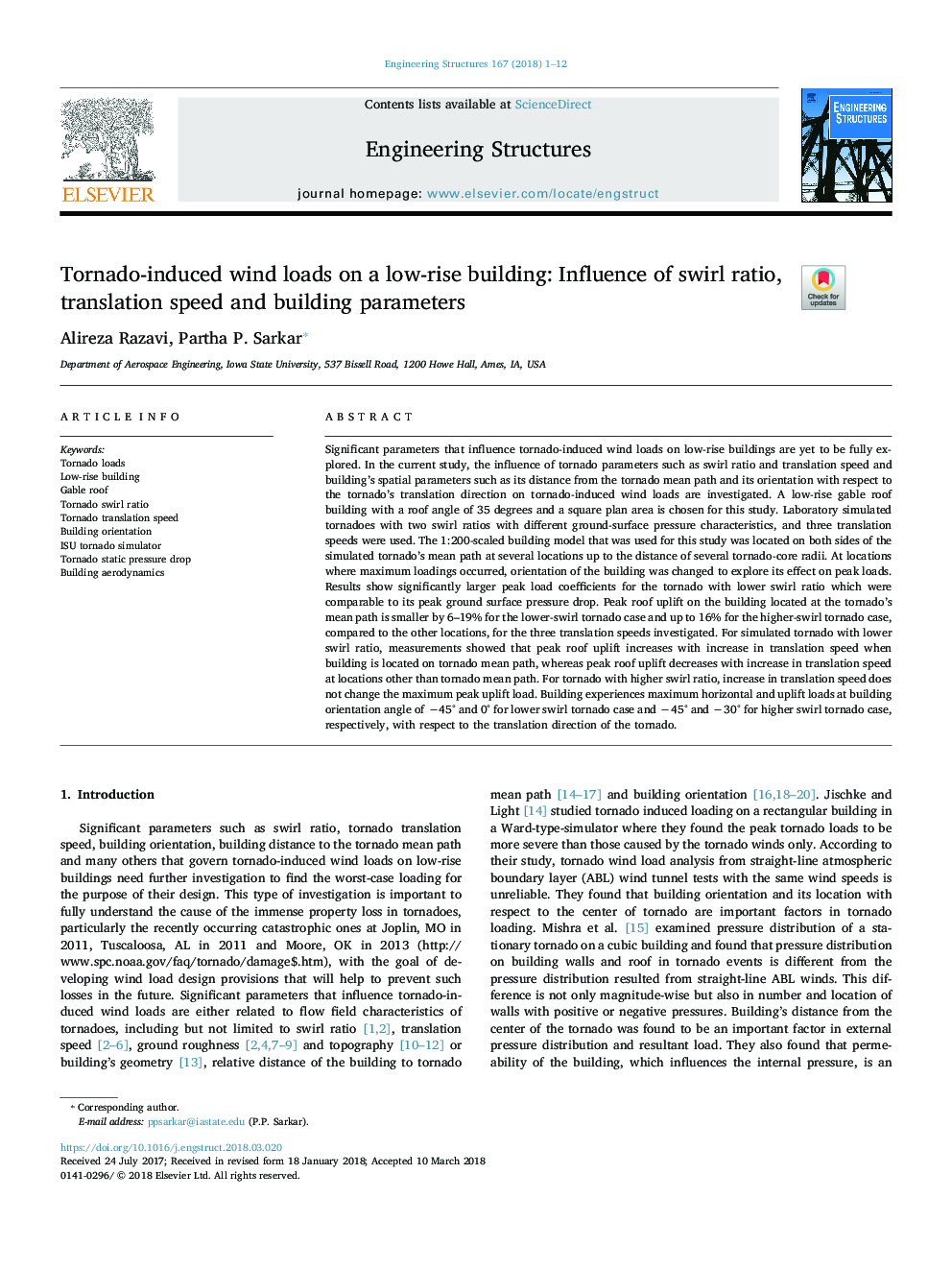| Article ID | Journal | Published Year | Pages | File Type |
|---|---|---|---|---|
| 6736892 | Engineering Structures | 2018 | 12 Pages |
Abstract
Significant parameters that influence tornado-induced wind loads on low-rise buildings are yet to be fully explored. In the current study, the influence of tornado parameters such as swirl ratio and translation speed and building's spatial parameters such as its distance from the tornado mean path and its orientation with respect to the tornado's translation direction on tornado-induced wind loads are investigated. A low-rise gable roof building with a roof angle of 35 degrees and a square plan area is chosen for this study. Laboratory simulated tornadoes with two swirl ratios with different ground-surface pressure characteristics, and three translation speeds were used. The 1:200-scaled building model that was used for this study was located on both sides of the simulated tornado's mean path at several locations up to the distance of several tornado-core radii. At locations where maximum loadings occurred, orientation of the building was changed to explore its effect on peak loads. Results show significantly larger peak load coefficients for the tornado with lower swirl ratio which were comparable to its peak ground surface pressure drop. Peak roof uplift on the building located at the tornado's mean path is smaller by 6-19% for the lower-swirl tornado case and up to 16% for the higher-swirl tornado case, compared to the other locations, for the three translation speeds investigated. For simulated tornado with lower swirl ratio, measurements showed that peak roof uplift increases with increase in translation speed when building is located on tornado mean path, whereas peak roof uplift decreases with increase in translation speed at locations other than tornado mean path. For tornado with higher swirl ratio, increase in translation speed does not change the maximum peak uplift load. Building experiences maximum horizontal and uplift loads at building orientation angle of â45° and 0° for lower swirl tornado case and â45° and â30° for higher swirl tornado case, respectively, with respect to the translation direction of the tornado.
Related Topics
Physical Sciences and Engineering
Earth and Planetary Sciences
Geotechnical Engineering and Engineering Geology
Authors
Alireza Razavi, Partha P. Sarkar,
